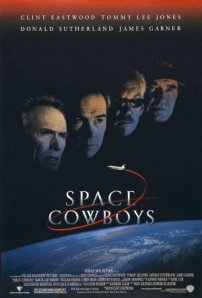Same Song, Different Movie: Fly Me To The Moon by Bart Howard
This is the continuation of a series from early last year that looks at the use of “needle dropped” songs, many of them popular tunes, used in movies but not officially considered part of a film’s score. A score consists of those orchestral, choral, or instrumental pieces some consider background music. Both song forms are equally utilized as cues by filmmakers for a specific purpose or to elicit certain reactions by the audience.
I’m fascinated by this in general, and movie soundtracks have long intrigued me. The convergence of the music and film arts I’ve spent much time toward. My wife can confirm this. Some (not all) movie soundtracks have incorporated those songs the director or music programmer showcased in their production along with the film’s score.
A few filmmakers have made it part of their work to incorporate well-known or popular song as a recurrent element. I think the use of music remains very much a part of the movie experience and related to its composition. I continue to watch out and listen for it in my movie viewing. As usual, I give credit to my blogging colleague over at Fog’s Movie Review for helping to ignite this series care of his excellent post, Tossin’ It Out There: What’s YOUR Favorite Song From a Movie?:
“… there’s a deep connection between the two arts, and sometimes that winds up creating an inseparable bond between the two in the viewer’s mind.”
For the first entry of 2013, we’ll fall back to a popular standard of the 50s by composer Bart Howard. It was he who wrote of the famous jazz vocal “Fly Me To The Moon” in 1954, which has been performed by a number of celebrated singers through the decades ever since. Originally titled, “In Other Words”, it was later changed. We’ll stick with the version that just might be the most remembered. Frank Sinatra‘s considered by many to be the definitive version. The tune was utilized to engaging and variant effect by two very different directors and films. The song served to bookend the films — arriving at the beginning or the end, respectively.
Wall Street (1987)
 This film was director Oliver Stone’s response to the excesses ushered in with the decade of the ’80s, in general, and Reagan capitalism, specifically. Wall Street took on what the filmmaker thought was the epicenter of both: the financial district of New York City. He and Stewart Copeland (who provided the film’s original score) used Howard’s song to a snappy result as it kicked off the film while it played during the opening titles. Centering on the young and naïve Bud Fox (Charlie Sheen, in better days) as he heads to work. As Mad Men‘s producers repeated in 2007 with Julie London’s cover for the end credits of the 11th episode of their first season, the song was utilized to denote the duplicitous love affair with riches and money. The key passage? “Fill my heart with song, Let me sing forever more, You are all I long for, All I worship and adore.” The irony? Wealth, along with its chase and trappings, was never going “to be true”, as our oblivious hero eventually learns.
This film was director Oliver Stone’s response to the excesses ushered in with the decade of the ’80s, in general, and Reagan capitalism, specifically. Wall Street took on what the filmmaker thought was the epicenter of both: the financial district of New York City. He and Stewart Copeland (who provided the film’s original score) used Howard’s song to a snappy result as it kicked off the film while it played during the opening titles. Centering on the young and naïve Bud Fox (Charlie Sheen, in better days) as he heads to work. As Mad Men‘s producers repeated in 2007 with Julie London’s cover for the end credits of the 11th episode of their first season, the song was utilized to denote the duplicitous love affair with riches and money. The key passage? “Fill my heart with song, Let me sing forever more, You are all I long for, All I worship and adore.” The irony? Wealth, along with its chase and trappings, was never going “to be true”, as our oblivious hero eventually learns.
Space Cowboys (2000)
 Juxtaposed against Stone’s reading and use of the tune in his film, Clint Eastwood’s take for his Space Cowboys motion picture from the 00s went for a historic, mid-60s approach (scored by Lennie Niehaus). Unsurprisingly, the filmmakers come from polar ends of the political spectrum. “Frank Sinatra’s 1964 recording was played by the astronauts of Apollo 10 on their lunar-orbital mission and again on the moon itself by the astronaut Buzz Aldrin during the Apollo 11 landing” [Wikipedia]. Plus, Fly Me To The Moon was obviously fitting, and literal, in this instance. The jubilant space drama took the goal of that era’s space program to its aged heart. The astronaut characters of a bygone time are the film’s focus. By story’s end, as Frank Corvin and his wife (Eastwood and Barbara Babcock) stare up at the Moon, it’s their colleague Hawk Hawkins (Tommy Lee Jones) filling them with wonder as the closing credits arrive. The film’s final image remains particularly haunting. “Fly me to the Moon, Let me swing among those stars, Let me see what Spring is like, On Jupiter and Mars”, indeed.
Juxtaposed against Stone’s reading and use of the tune in his film, Clint Eastwood’s take for his Space Cowboys motion picture from the 00s went for a historic, mid-60s approach (scored by Lennie Niehaus). Unsurprisingly, the filmmakers come from polar ends of the political spectrum. “Frank Sinatra’s 1964 recording was played by the astronauts of Apollo 10 on their lunar-orbital mission and again on the moon itself by the astronaut Buzz Aldrin during the Apollo 11 landing” [Wikipedia]. Plus, Fly Me To The Moon was obviously fitting, and literal, in this instance. The jubilant space drama took the goal of that era’s space program to its aged heart. The astronaut characters of a bygone time are the film’s focus. By story’s end, as Frank Corvin and his wife (Eastwood and Barbara Babcock) stare up at the Moon, it’s their colleague Hawk Hawkins (Tommy Lee Jones) filling them with wonder as the closing credits arrive. The film’s final image remains particularly haunting. “Fly me to the Moon, Let me swing among those stars, Let me see what Spring is like, On Jupiter and Mars”, indeed.
The entire series can be found here.


17 Responses to “Same Song, Different Movie: Fly Me To The Moon by Bart Howard”
Awesome post, Michael 🙂 I really like this feature and I love that you wrote about my favorite song 😉
LikeLike
It’s a great song, alright. I remember you saying it was, too. I thought about you when I wrote this up, Fernando. Many thanks.
LikeLike
Great song! I didn’t remember it being played in both movies (as my memory is not as good as yours Michael), but I have seen both. Love it!
LikeLike
Oh, that’s good, Ruth. Thank you very much.
LikeLike
Michael, great post about a great song. I remember I first became aware of the song when I heard the Julie London version used in a Ford commercial back in the 90s.
LikeLike
Great memory for this song, Colin. Yeah, I love just about everything Julie London ever sang. This one, especially. Many thanks, my friend.
p.s., great clip of this commercial.
LikeLike
Hi, Michael and company:
Intriguing question!
I’ve been partial to nearly the entire soundtrack of Larry Kasdan’s ‘The Big Chill’. Especially using the Stones’ “You Can’t Always Get What You Want” from the chapel through the funeral procession. The Band’s “The Weight” for the post party hangover sequence with Mary Kay Place before, through and beyond breakfast the next morning. And Percy Sledge’s “When A Man Loves A Woman” during the gang’s last night together.
“The Weight” was first used in “Easy Rider”. While “When A Man Loves A Woman” was wondrously covered in Alan Parker’s “The Commitments”.
“The Big Chill” boasts superb use of what are now oldies in a so-so story that still falls short of John Sayles’ “The Return of The Secaucus Seven”.
Also enjoy the meticulous editing of the final battle and Iron Butterfly’s “In A Gadda Da Vida” in Michael Mann’s “Manhunter”. And the use of Wagner in Air Cav helicopter pacification operation in Coppola’s “Apocalypse Now”.
If you listen closely, you’ll hear “Rubber Biscuit” by the Chips in both “Mean Streets” and “Goodfellas” by Scorsese.
LikeLike
Wonderful comment and movie/music thoughts, Kevin. Well done. If you ever want to contribute to this, let me know. Would love to host it. Thank you very much.
LikeLike
Hi, Michael:
Just sent out a Test E-Mail to establish a link for future use.
LikeLike
Got it. I’ve responded, Kevin. Thanks.
LikeLike
[…] Same Song, Different Movie: Fly Me to the Moon by Bart Howard […]
LikeLike
one of my fave songs. I like how appropriate it is in Space Cowboys! 🙂 Great post my friend!
LikeLike
Oh, yes, indeed. Thanks, my friend.
LikeLike
[…] As mentioned prior, director Oliver Stone’s response to the excesses ushered in with the decade of the 80s, in general, and Reagan capitalism, specifically, centered on the financial district of New York City. Stewart Copeland wrote Wall Street‘s original score, but among its needle-dropped moments, the callow Bud Fox (Charlie Sheen) was featured once more in a standout. His attempt at domesticity — his “This is it. This is home.” moment — as he purchased his Manhattan condo to please his materialistic girl (Daryl Hannah), and himself. Byrne’s lyrics lent themselves perfectly to this. Right from the start with its uncanny opening: […]
LikeLike
[…] Me To The Moon: As mentioned, “…the song was utilized to denote the duplicitous love affair with riches and […]
LikeLike
[…] director-producer Oliver Stone no stranger to this series (as seen here and here). Like it or not, his work is never boring. U Turn, an under-appreciated neo noir of the […]
LikeLike
[…] it’s featured in plenty of films and documentaries I have consumed over years, like the delightful Space Cowboys from 2000. So it has been burned into […]
LikeLiked by 1 person